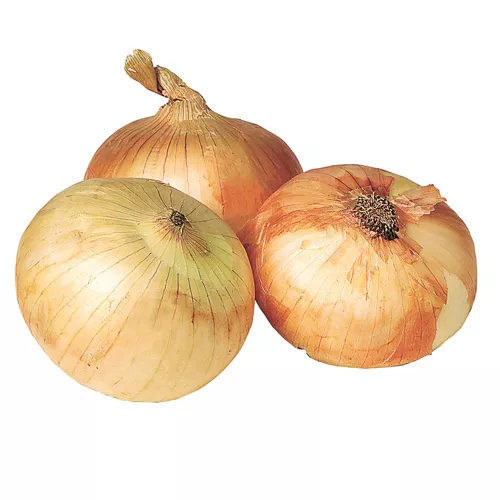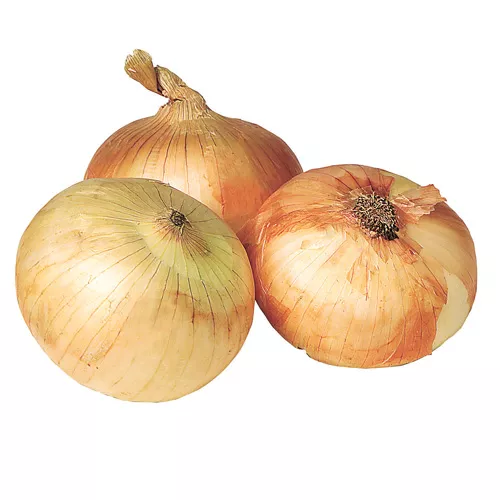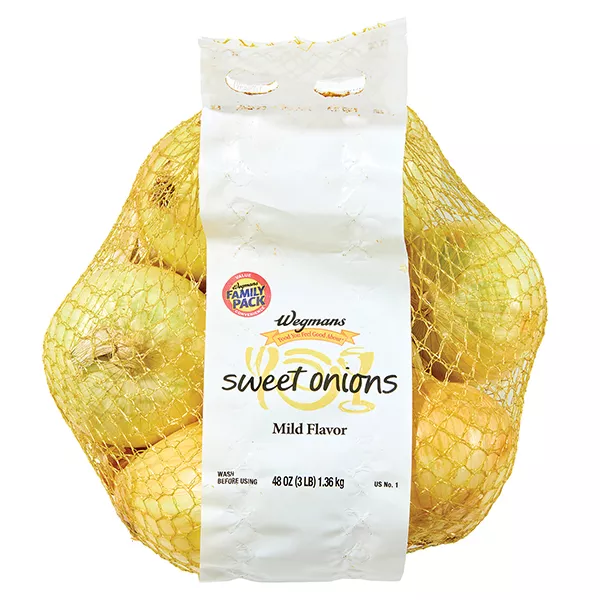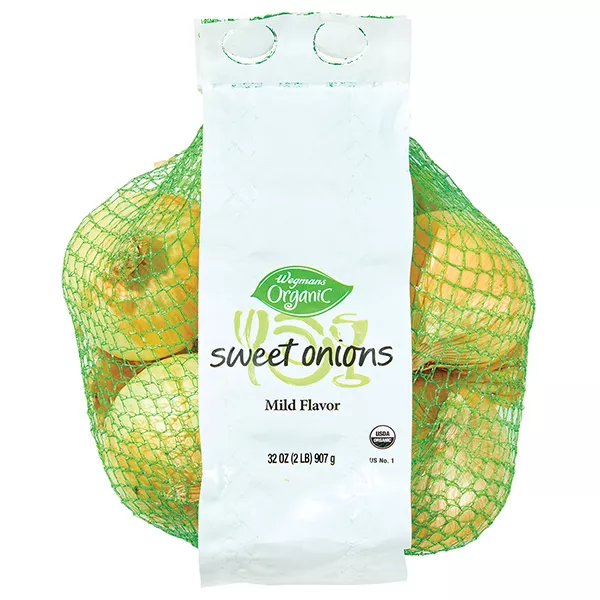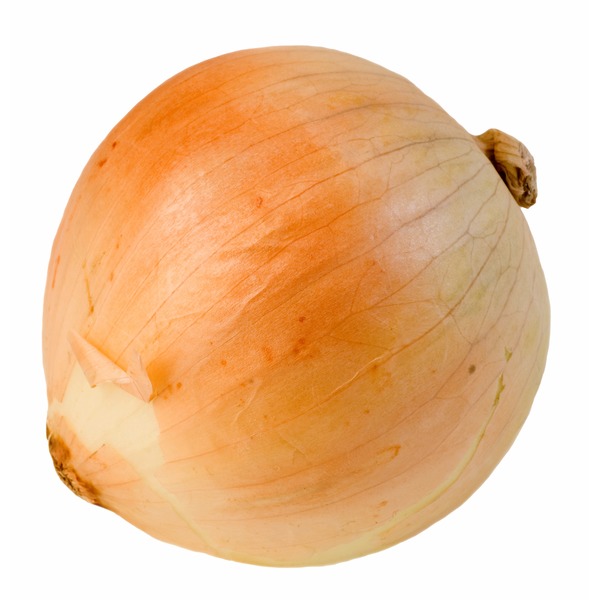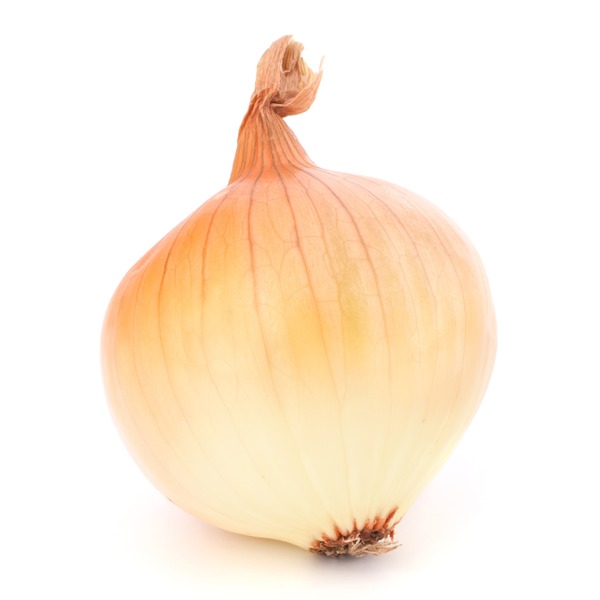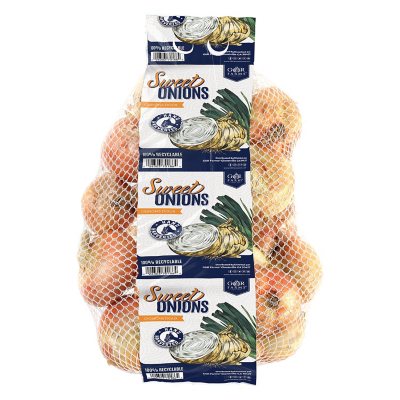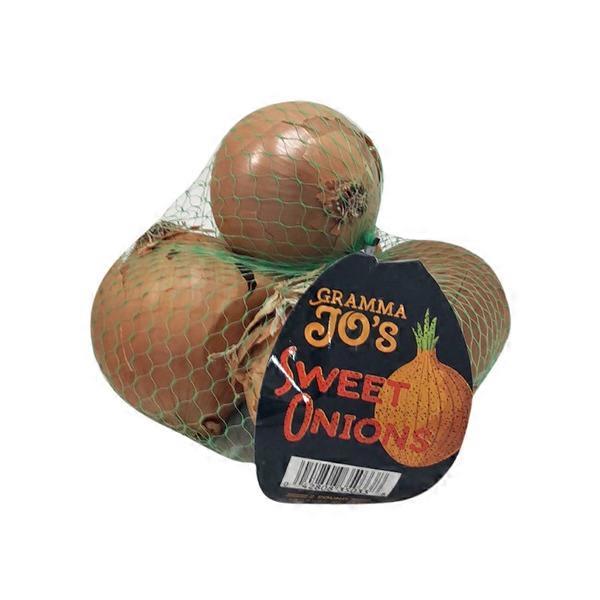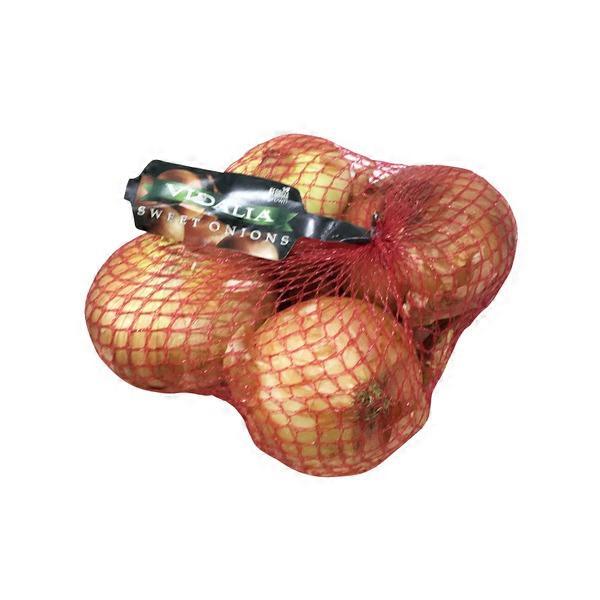SALADS
MAIN DISHES
SIDE DISHES
Sweet Onion
Sweet onions are a delightful variety of onion known for their mild and subtly sweet flavor, making them a versatile addition to numerous dishes. With a lower sulfur content than regular onions, they impart a gentle taste that won't overpower the other ingredients in your culinary creations. Their juicy texture is perfect for adding crunch and flavor to salads, sandwiches, and salsas without causing the sharpness often associated with onions.
Perfect for caramelizing, these onions become even sweeter when sautéed, creating a rich, velvety base for soups, stews, or pasta sauces. Additionally, sweet onions are excellent for grilling or roasting, which enhances their natural sugars and brings out a deeper, aromatic sweetness. With their pleasant taste and adaptability, sweet onions can effortlessly elevate both everyday meals and special dishes.
93%
CARBS
0%
FAT
7%
PROTEIN
928 Sweet Onion Products
Used In 228 Recipes
5
Easy One-Pot Chicken Parmesan Pasta
6
Savory One-Pan Kielbasa, Rice and Beans Fiesta
6
Thyme Infused Balsamic Glazed Chicken with Caramelized Onions
6
Savory Teriyaki Pork Lo Mein
6
Philly-Style Smashburgers
2
Savory Onion Smash Burgers with Garlic Herb Aioli
6
Sizzling Sriracha Turkey Chili
2
Cheesy Beef & Pasta Shells
Sweet Onion Is Frequently Used With
Sweet Onion FAQ
Vidalia onions, named after Vidalia, Georgia, where they were first cultivated, are sweet, mild, and less pungent due to their low sulfur and high water content. They are highly versatile and can be used in a plethora of culinary applications. Some people find it challenging to caramelize Vidalia onions perfectly due to their high water content, but slow cooking on low heat can solve this issue. Vidalia onions are also ideal for grilling or roasting, but overcooking can make them lose their unique flavor. It's best to lightly season these onions to let their taste shine through your dishes. Some people might confuse Vidalia onions with other sweet onion varieties, but Vidalia onions are exclusive to Georgia and have a flatter shape compared to others.
How can I caramelize Vidalia onions without burning them?
What's the difference between Vidalia onions and other sweet onions?
Can Vidalia onions be used in place of regular onions?
Do Vidalia onions make you cry less while chopping?
Can Vidalia onions be eaten raw?
Should I over-season Vidalia onions?
Can Vidalia onions be grilled?
Can Vidalia onions be roasted?
What dishes go best with Vidalia onions?
How to pick the best Vidalia onions at a grocery store?
Expiration & Storage Tips
When does vidalia onion expire?
A whole, uncut Vidalia onion can last about 2-3 months if stored properly. Once cut, a Vidalia onion should be used within 1-2 days when stored in the fridge. If the onion is cooked, it can last up to 5-7 days in the refrigerator. If you decide to freeze it (although it’s not common), raw or cooked Vidalia onion can last up to 6-8 months.
How do you tell if vidalia onion is bad?
Spoiled Vidalia onions can be identified by a soft, moist texture and a foul, rotten smell. If you notice any spots of mold or discoloration, especially in a cut onion, it's a sure sign that the onion is no longer safe to eat. Even without visible signs, if the onion has a strange taste or smell, it's best to discard it. Remember, when in doubt, throw it out!
Tips for storing vidalia onion to extend shelf life
• Keep the onions in a cool, dark, and well-ventilated area. Avoid keeping them in plastic bags as they can trap moisture and speed up spoilage.
• Once cut, store the onion in a sealed container in the refrigerator to keep it fresh and contain its pungent aroma.
• Avoid storing onions near potatoes, as potatoes release moisture and gases that can make the onions spoil faster.
• If you want to store onions for a longer time, consider freezing them. However, keep in mind that freezing changes their texture, making them suitable only for cooked dishes.
• To freeze Vidalia onions, peel and chop them, spread them out on a baking sheet, freeze until firm, and then transfer to a freezer-safe container. This way, you can grab the desired amount easily when cooking without defrosting the entire batch.
EXPIRES WITHIN
7 - 10
WEEKS
Substitutes

Diced Yellow Onion

Onion

White Onion

Yellow Onion

Diced Onion

Peeled Shallot

Cipollini Onion

Diced Celery Onion Blend

Green Onion

Diced Red Onion
See All
Health Info
Macros
15g
CARBS
0g
FAT
1g
PROTEIN
Allowed on these diets
LOW FAT
HIGH CALCIUM
VEGETARIAN
KETO
PALEO
WHOLE 30
MEDITERRANEAN
LOW CARB
VEGAN
LACTOSE FREE
GLUTEN FREE

